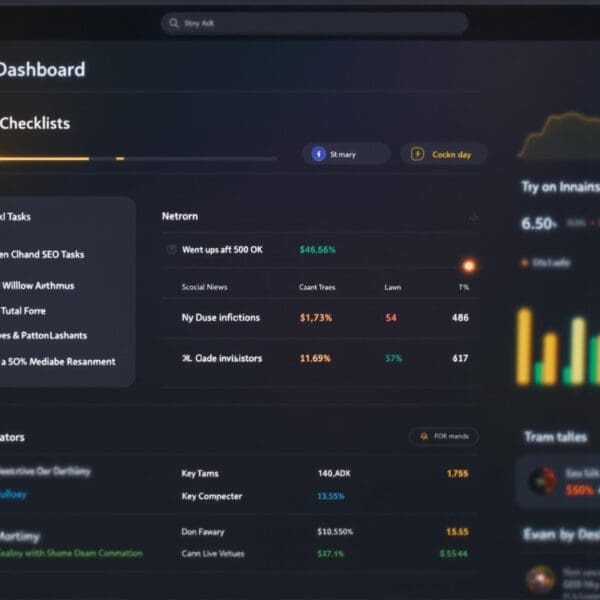Table of contents
ToggleContents
Introduction
With the rise of social media, brands and marketers have powerful tools at their disposal to understand and influence consumer behavior. However, a large part of online social activity remains invisible to traditional analysis tools: this is what we call Dark Social. This phenomenon, although little-known, represents an essential part of online interactions and sharing. In this article, we delve into the world of Dark Social, its implications and how brands can adapt to take advantage of it.
What is Dark Social?
The term “Dark Social” was popularized by The Atlantic journalist Alexis C. Madrigal in 2012. It refers to content sharing on the web that escapes data analysis tools. Specifically, it refers to links shared via private channels such as emails, text messages and instant messaging applications (WhatsApp, Messenger, etc.), as opposed to public shares on platforms such as Facebook, Twitter or LinkedIn.
Interactions on Dark Social are often more authentic and personal. Users share articles, videos or products they find interesting directly with friends, family or colleagues, out of sight of traditional tracking tools.

The Importance of Dark Social
According to a study by RadiumOne, up to 84% of online content sharing takes place via Dark Social. This means that the majority of online social interactions are untraceable by conventional analytics tools. For marketers, this invisibility can represent a major challenge, but also a unique opportunity.
1. Authenticity of Interactions
Shares on Dark Social are often more sincere and representative of users’ true interests. Unlike public shares, which may be motivated by the search for social validation, private shares reflect personal recommendations and genuine discussions.
2. Scope and influence
Dark Social allows content to spread quickly and organically. A link shared in a newsgroup can reach several people in a matter of seconds, without ever appearing in public sharing statistics.
3. Rich and Untapped Data
Data from Dark Social can offer valuable insights into user preferences and behavior. However, this data often remains untapped due to its untraceable nature.

How to track and analyze Dark Social?
Despite its elusive nature, there are ways for marketers to capture and analyze some of the Dark Social’s activity.
1. Using Short URLs
One of the most effective methods of tracking shares on Dark Social is the use of shortened, trackable URLs. Services like Bitly allow you to create personalized links that can then be tracked to see how many times they are clicked, even when shared via private channels.
2. Integrated Share Buttons
By embedding share buttons directly on content (blog posts, product pages, etc.), brands can encourage users to share via traceable means. While this doesn’t capture all of Dark Social, it can increase the visibility of shares.
3. Advanced Analysis Tools
Advanced analytics tools, such as Google Analytics, can help identify indirect traffic sources. For example, by examining landing pages and user behavior, it’s possible to deduce certain interactions originating from Dark Social.
4. Surveys and Feedback
Another method of gaining Dark Social insights is to ask users directly how they heard about a piece of content or a product. Surveys and feedback can reveal untraceable sharing channels.
Strategies for profiting from Dark Social
For marketers, understanding and exploiting Dark Social requires a strategic approach. Here are some tips for integrating Dark Social into your marketing strategy:
1. Create Shareable Content
Content is king, and to encourage sharing, it needs to be relevant, engaging and of high quality. Informative articles, captivating videos and attractive infographics are more likely to be shared.
2. Make it easy to share
Include share buttons on your content and make the process as simple as possible for users.
The easier it is to share, the more inclined users will be to do so.
3. Use traceable URLs
Whenever you share content, use shortened, trackable URLs.
This will help you track some of the shares made via Dark Social.
4. Encourage discussion
Create spaces for private discussions, such as Facebook groups or private forums.
Encourage your users to share their experiences and opinions in these spaces.
5. Analyze the data and adapt
Use the available data to analyze user behavior and adjust your strategy accordingly.
The insights you gain can help you better understand what works and what doesn’t.
Case study: The success of Dark Social
Many companies have successfully exploited Dark Social to boost their visibility and engagement.
Here are a few inspiring examples:

BuzzFeed
BuzzFeed uses shortened URLs and embedded share buttons to track shares of their articles.
They have also developed their own tracking system to better understand how their content is spreading via Dark Social.

Spotify
Spotify encourages the sharing of playlists and songs via private messages and messaging applications.
By making sharing easier, they have succeeded in increasing engagement and attracting new users.
The New York Times
The New York Times uses advanced analytics to track shares of their articles. They have also set up surveys to understand how readers discover and share their content.
Conclusion
Dark Social represents both a challenge and a huge opportunity for marketers. By understanding and exploiting this phenomenon, brands can gain valuable insights, boost audience engagement and improve their marketing strategy. Although tracking Dark Social is complex, the tools and strategies available make it possible to leverage it effectively. Ultimately, it’s about taking a proactive approach and embracing the invisible to discover hidden treasures in the world of the social web.
Have you already explored the potential of Dark Social for your brand? Share your experiences and tips in the comments below! And to make sure you don’t miss any of our upcoming articles, subscribe to our newsletter.















